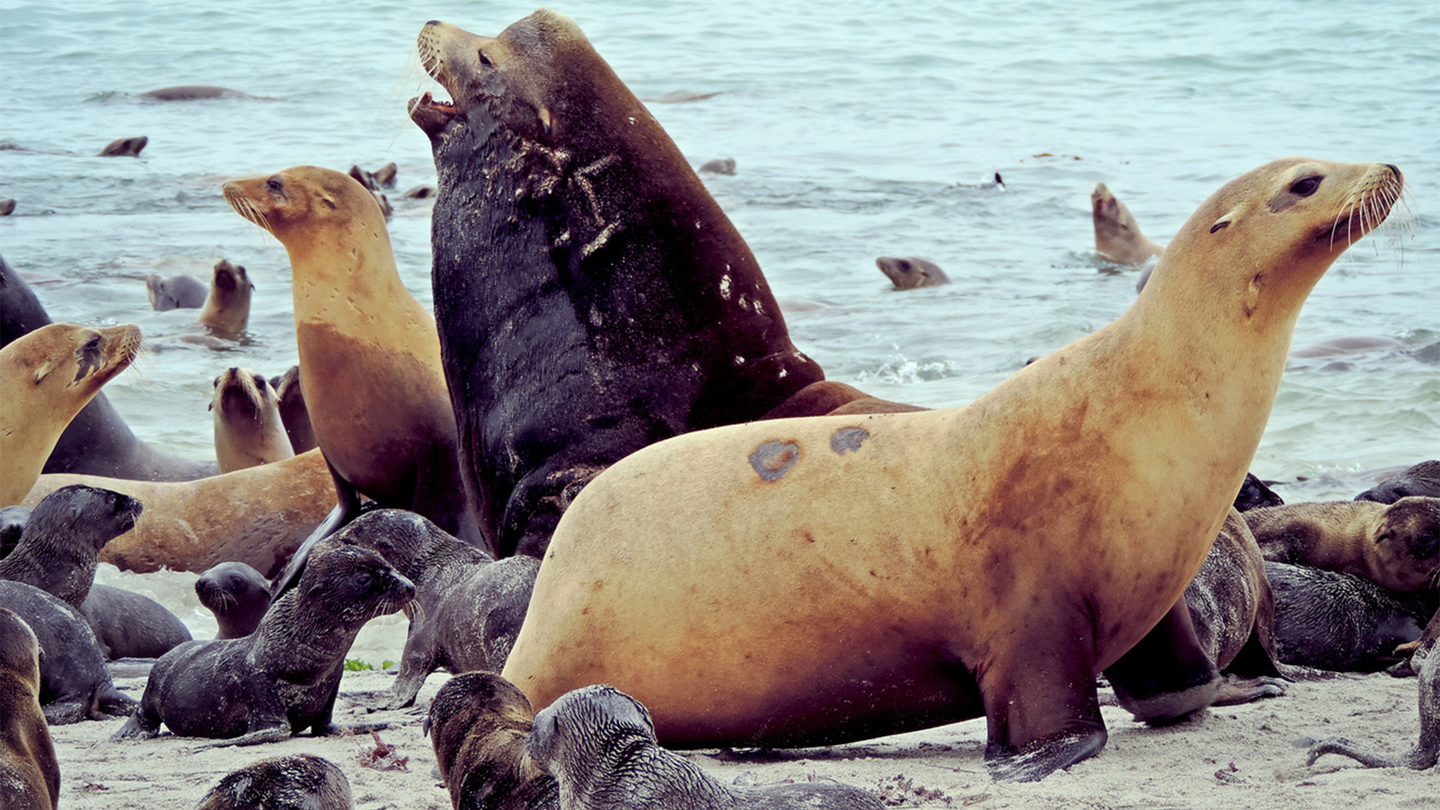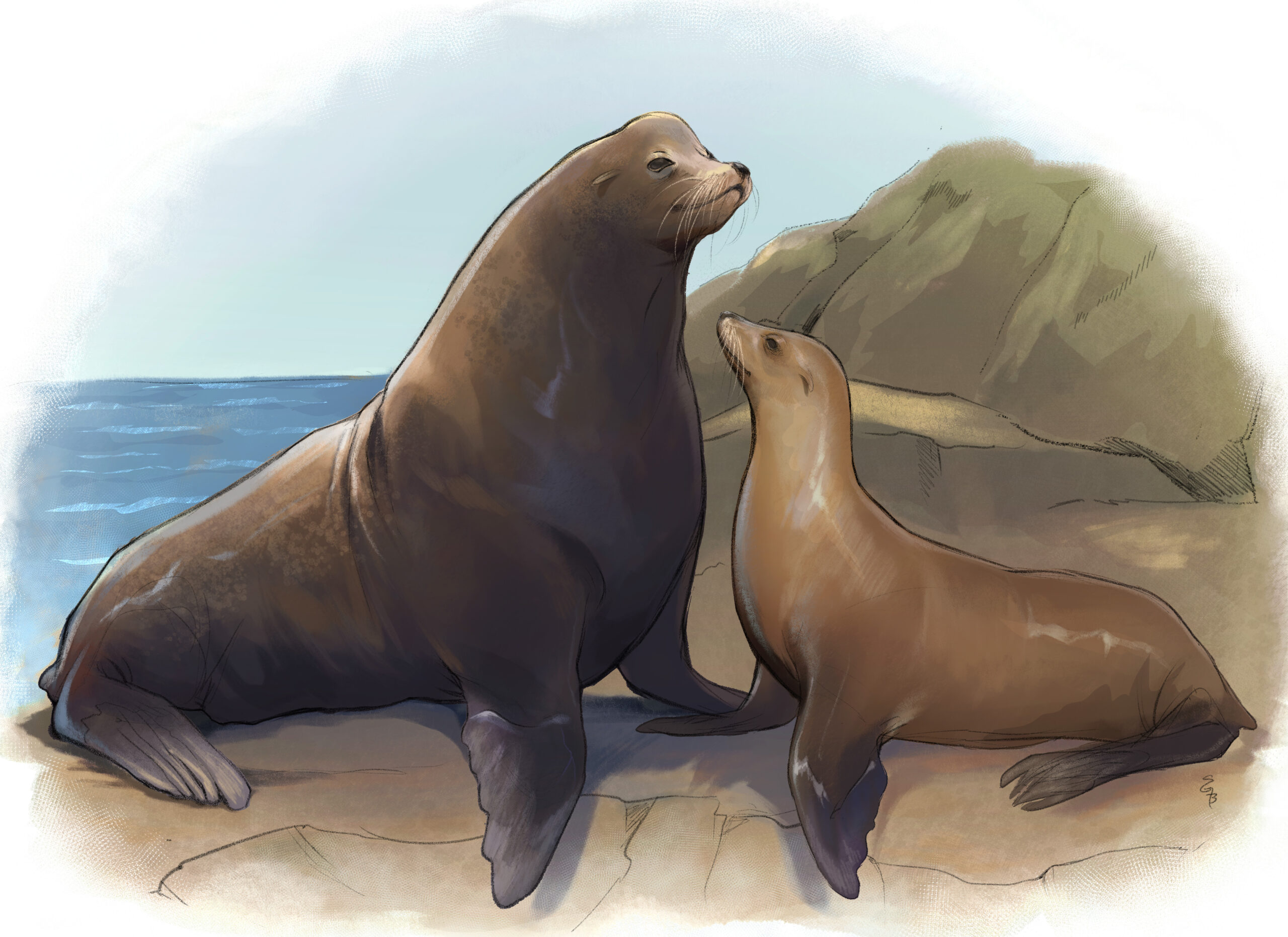Male California sea lions have gotten bigger and better at fighting
Size matters during mating season, but the 'raccoons of the sea' face a risky future due to fish shortages.

In response to climate change, a lot of animals—such as polar bears and birds like sparrows—appear to be getting smaller in size. However, male California sea lions have increased their average body size even as their population has grown and the competition for food and resources has increased.
In a study published April 27 in the journal Current Biology found that sex selection was a strong driving force for the male sea lions to strengthen the neck and jaw muscles that they use to fight for mate and to grow larger. Additionally, both male and female sea lions responded to food shortages by diversifying their diets and foraging further from the shore in some cases.
[Related: Fish populations thrive near marine protected areas—and so do fishers.]
Numerous marine species have rebounded a bit since the Marine Mammal Protection Act was passed in 1972, but California sea lions are notable for the size and duration of their population increase. The number of breeding females have tripled since the 1970s and the population growth is only beginning to plateau now.
“Body size reduction is not the universal response to population increase in marine predators,” co-author and University of California Santa Cruz and the Smithsonian Institution paleoecologist Ana Valenzuela-Toro said in a statement. “California sea lions were very resilient over the decades that we sampled and were able to overcome increasing competition thanks to prey availability. They’re like the raccoons of the sea: they can consume almost everything, and they can compensate if something is lacking.”

In the study, the team analyzed museum specimens of adult male and female California sea lions that were collected between 1962 and 2008. To estimate changes in body size, they then compared the overall size of over 300 sea lion skulls, taking into account other skull features like the size of muscle attachment points, to assess the changes made in both neck flexibility and biting force.
To get an idea of where the sea lions were foraging and what they were eating, the team took tiny bone samples from the skulls and measured their stable carbon and nitrogen isotope composition. “Carbon provides information about habitat use—whether they’re foraging along the coast or offshore—and nitrogen provides insights about the trophic level of their prey, for example if they’re consuming smaller or larger fish,” said Valenzuela-Toro.
The team found that overall the male sea lions have increased in size, while females have remained stable. They believe that the sex difference is likely due to the fact that size matters more for a male in terms of mating success. “One male can breed with many females, and males in the breeding colony fight with each other to establish their territory,” said Valenzuela-Toro. “Bigger males are more competitive during physical fights, and they can go longer without eating, so they can stay and defend their territory for longer.”
[Related: For marine life to survive, we must cut carbon emissions.]
The male sea lions also increased their biting force and neck flexibility over this same time period. This allows them to move their heads more with greater agility and bite harder when fighting other males.
The isotopic analyses showed that both sexes managed to meet nutritional needs through diet diversification and going further north for food. Female sea lions consistently had a more diverse diet than the male sea lions, and the authors suggest that this flexibility in food choice may be what allowed females to maintain average body size.
The flexibility can only take sea lions so far, however, and climate change is putting their future in jeopardy. The dynamics that allowed for this growth occurred when their prey of sardines and anchovies were plentiful, and the populations of both fish have collapsed in recent years. The California sea lions have continued to diversify their diets to compensate, but are struggling.
“As climate change progresses, prey availability of sardines and anchovies will decrease even more, and eventually we will have more permanent El Niño-like warming conditions, reducing the size and causing a poleward shift of these and other pelagic fishes,” said Valenzuela-Toro “It will be a really hostile environment for California sea lions, and eventually we expect that their population size will stop growing and actually decline.”
